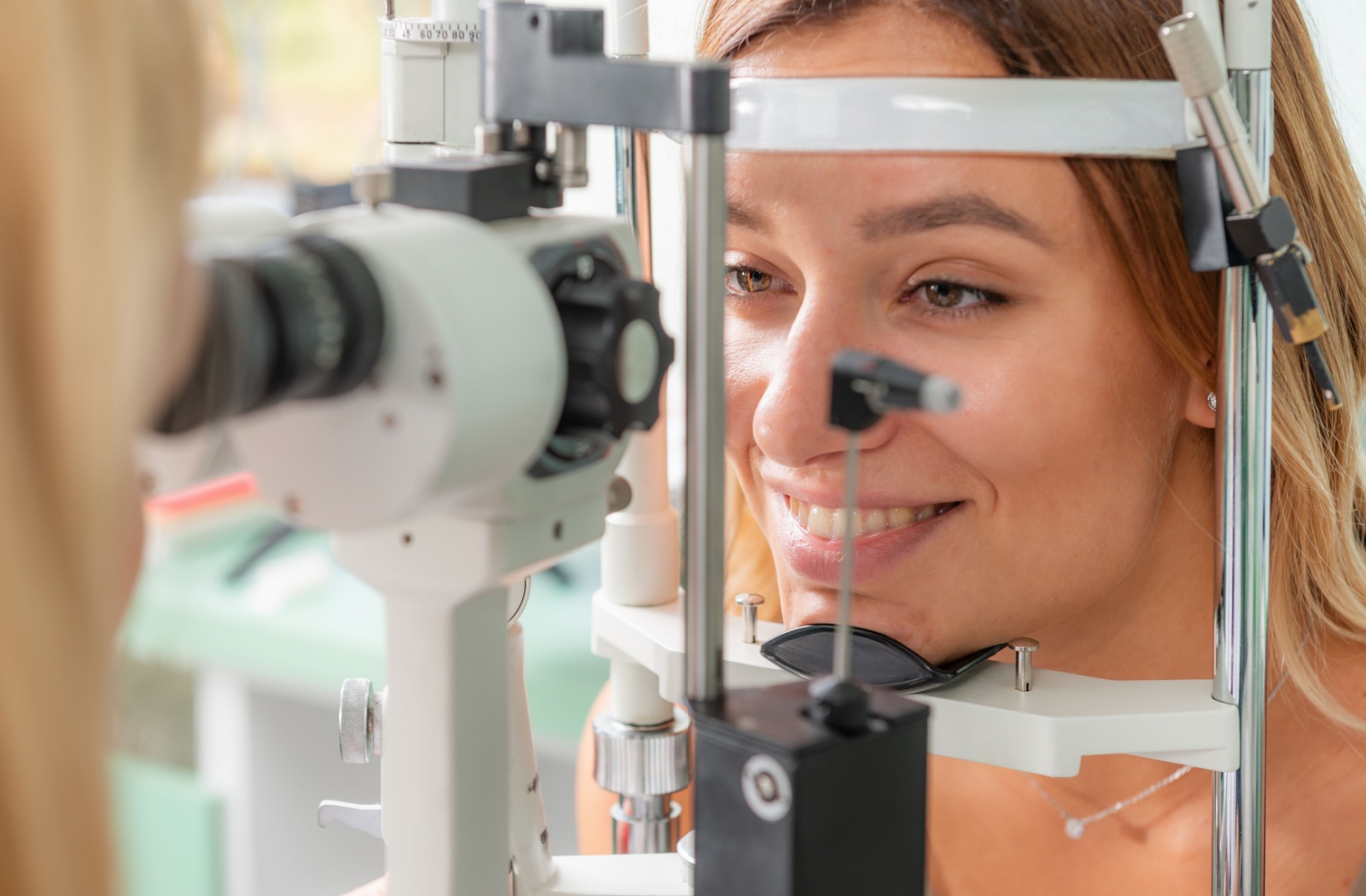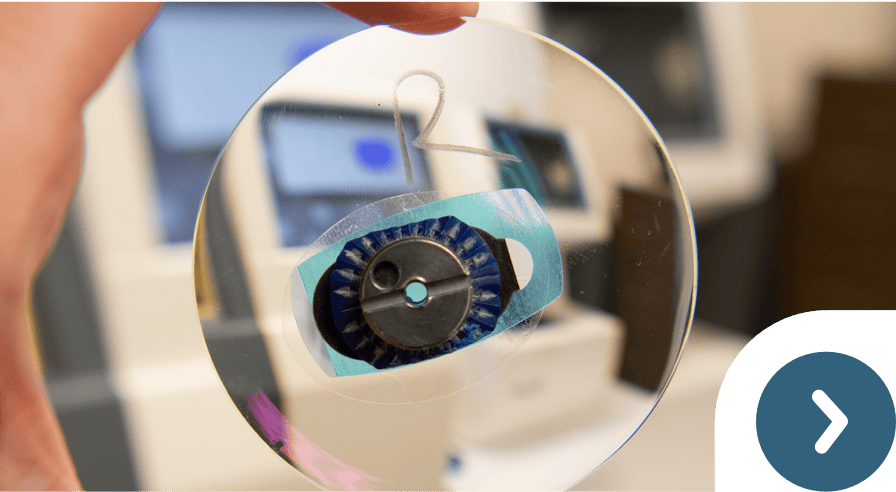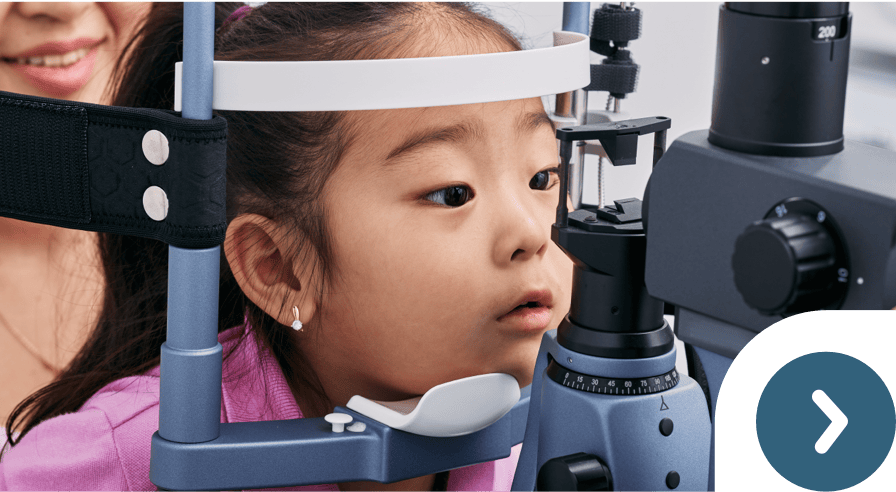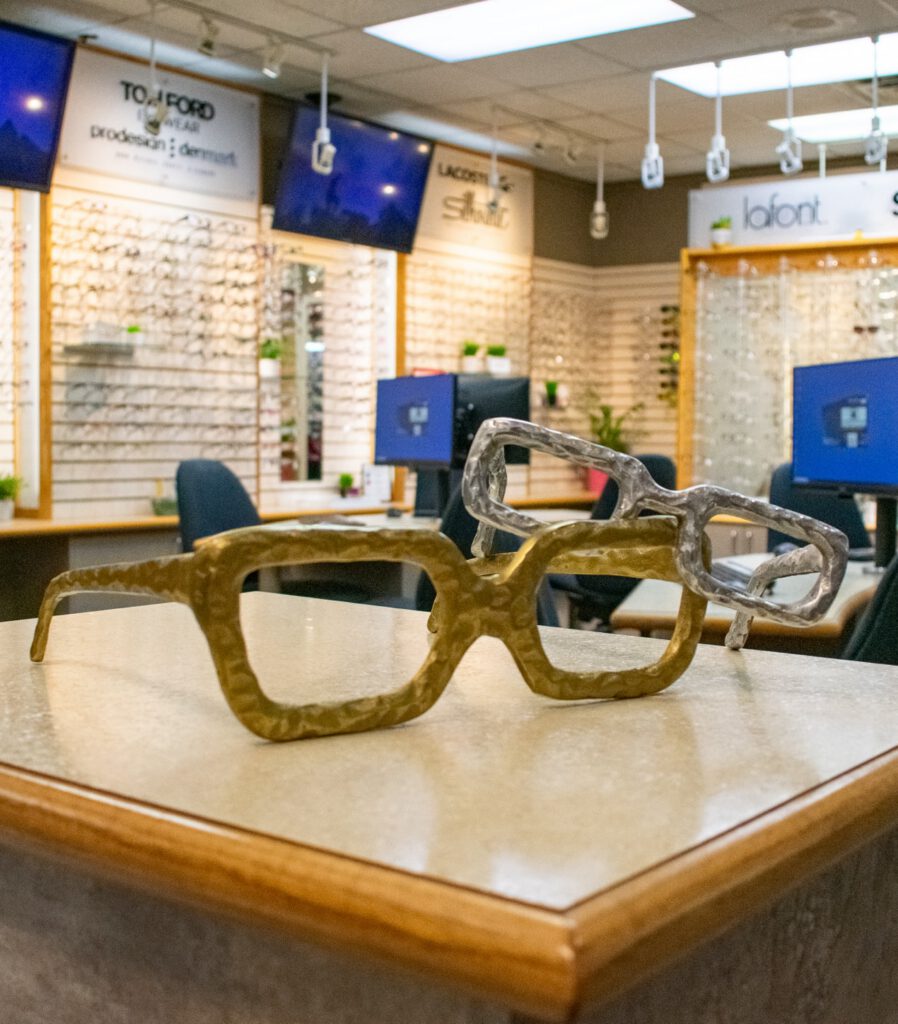Glaucoma, a complex eye condition, can lead to serious vision damage if left untreated. It’s a subtle, progressive condition that tends to develop without obvious warning signs. Regular eye examinations are key to catching conditions like glaucoma—they’re the easiest way to detect problems before they damage your vision. But what causes glaucoma in the first place?
Glaucoma develops due to a mix of genetic, lifestyle, and environmental factors. It does have hereditary components—if one parent or immediate family member has glaucoma, your risk of the same type is significantly higher.
What Is Glaucoma?
Inside your eye, there’s a small area called the anterior chamber. This space constantly produces and drains fluid. When every system works well, this maintains steady pressure inside your eye.
This internal pressure, also called “intraocular pressure,” is a crucial part of how your eye functions. It helps keep everything in shape and nourishes the tissues. If the pressure is too high or low, problems quickly develop.
Glaucoma happens when that pressure is too high. The pressure starts damaging the delicate structures inside the eye before causing vision issues. Eventually, high intraocular pressure damages the optic nerve and causes permanent vision loss.
Glaucoma is a progressive and subtle condition, and it often develops without obvious outward signs. However, even if there are no symptoms, it still damages the optic nerve. This is why regular appointments with an eye care professional are so important—especially for older adults. These examinations are essential for catching glaucoma before permanent vision loss occurs.
Are There Different Types Of Glaucoma?
Glaucoma has a bit of a catch. It isn’t a single condition—it’s a group of different underlying causes that lead to higher intraocular pressure. There are several specific types of glaucoma, each with unique symptoms, causes, and effects.
The 4 most common types of glaucoma include:
- Open-angle glaucoma
- Angle-closure glaucoma
- Normal-tension glaucoma
- Secondary glaucoma
Treatment for glaucoma depends on what type a person is experiencing.
Open-Angle Glaucoma
Open-angle glaucoma is the most common type. It develops gradually without any obvious symptoms. Because of this, it’s often called “the silent thief of sight.”
This type of glaucoma causes a clog in the drainage angles inside your eye. This prevents fluid from escaping the eye. Steadily, intraocular pressure grows, which then begins damaging the surrounding structures in the eye.
Open-angle glaucoma doesn’t tend to show any symptoms in the earliest stages. If caught early, this type can be effectively managed with the help of an experienced optometrist. Treatment usually involves specialty eye drops, careful monitoring, and surgical intervention if needed.
This type has a strong genetic component—if an immediate relative experiences open-angle glaucoma, you should schedule regular eye examinations to watch out for this condition.
Angle-Closure Glaucoma
Angle-closure glaucoma is much less common. However, it’s also much more serious. It occurs when the drainage angles in the eye become completely blocked.
When this develops, the fluid inside the eye can’t drain properly, if at all. Angle-closure glaucoma then causes a dramatic rise in intraocular pressure. This condition tends to cause:
- Severe eye pain
- Blurry vision
- Headaches
- Nausea and vomiting
- Halos around lights
- Sudden vision loss
If you experience these, seek immediate medical attention. Angle-closure glaucoma causes permanent vision loss if untreated. It’s a medical emergency and requires immediate care.
Normal-Tension Glaucoma
Normal-tension glaucoma is unique. It develops when intraocular pressure is at or below normal levels but still damages the optic nerve. This is significantly less common than other types of glaucoma.
It’s not entirely understood why normal tension glaucoma develops. However, it’s believed to be due to a mix of factors. These include:
- Restricted blood flow to the optic nerve
- Weakening of the eye’s internal structures
- Poor blood pressure and related medication
Regular eye examinations are essential to detecting normal-tension glaucoma. Your optometrist can examine your optic nerve using special techniques to identify any damage or changes in its appearance. This makes it much easier to catch this condition before it causes any damage.
Secondary Glaucoma
Secondary glaucoma occurs when another health issue or eye condition changes intraocular pressure. This then disrupts the eye’s drainage system. Unlike primary glaucoma, secondary glaucoma develops from outside factors, rather than the natural closing of the drainage angle.
Several conditions known to cause secondary glaucoma include:
- Eye injuries or trauma
- Chronic inflammation inside the eye, such as uveitis
- Complications from advanced cataracts
- Diabetes-related changes to the eye
- Long-term use of medications like steroids
Treating secondary glaucoma requires addressing the underlying condition. The goal is simple—to reduce the symptoms of the original problem and minimize their effect on the drainage system inside the eye. This can then lower the risk of vision loss and glaucoma-related complications.
Get Checked For Glaucoma
Glaucoma is technically a hereditary condition. However, it’s important to consider all factors. Your lifestyle, environment, and medical history all play a role—and so do regular eye examinations.
While you can’t change your genetics, you can take steps to reduce the risk of glaucoma. And it all starts with a visit to our team at Westmount Optometrists. Book your next appointment with us today, and together, we can watch out for the silent thief of sight!









































